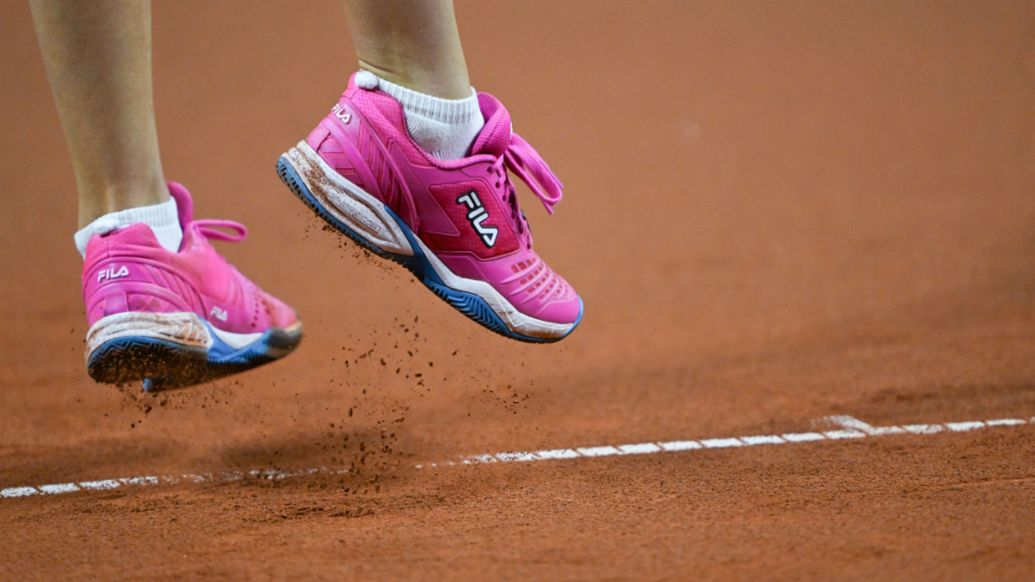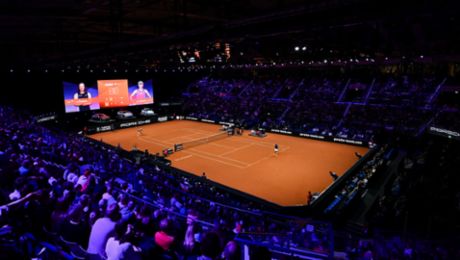How are the clay courts installed at the Porsche Tennis Grand Prix?
The first step involves laying 15-millimetre-thick foam mats on the bare ground in the arena. These then serve as shock absorption. Then large wooden boxes are driven into the arena by a fork-lift truck. They contain 2.14 x 1.07 metre plywood panels weighing 90 kilos. It is covered by a two-centimetre thick mixture of red brick dust and a binder. A court consists of a total of 483 panels and weighs approximately 50 tons. It takes about 12 hours to lay the jointless surface.

Which clay is used and how is it laid?
The clay court in Stuttgart consists of two layers made of ground red tiles. First, a layer of two-millimetre grains is laid and then it is topped by layer of grains that are only half as thick. A binder is added for improved moisture retention. It is also the reason why the court does not have to be watered during the tournament and only has to be dragged.

How are the lines installed?
The five-centimetre lines marking the playing area are pre-cut and accordingly pre-glued in the panels.
Why are the new courts more sustainable?
Whilst the courts were previously shredded and recycled after the tournament, Rebound Sports’ courts are disassembled the day after the final and stored. A total of six 40-tonners then transport the panels back to Hungary. A seventh truck transports the red clay which is then donated to tennis clubs in Hungary.




